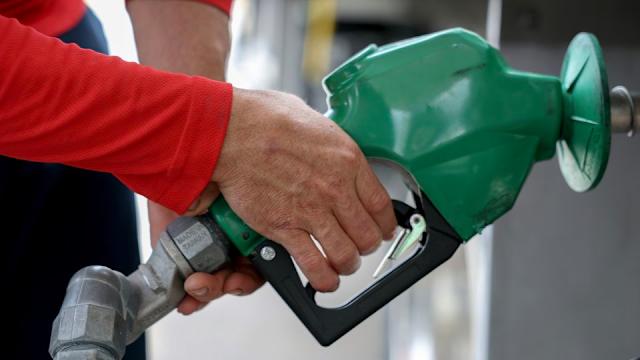Why Gasoline Prices Arent Falling Despite Falling Oil Prices: Market Dynamics and Speculation at Play
Oil futures continued to decline on Tuesday, as hopes for a stable ceasefire between Israel and Iran reduced the risk of a significant disruption to global energy markets. Gasoline futures also fell, but consumers may not see a significant drop in pump prices anytime soon.

According to AAA, the national average gasoline price stood at $3.12 on June 10, just before oil and gasoline prices began to climb due to concerns about the impending conflict between Israel and Iran. However, the so-called New York harbor prices for gasoline futures closed at a wholesale price of only $2.09, and a barrel of Brent crude, the global benchmark for oil, closed at $66.60 that day.
Both wholesale gasoline and oil futures began to rise steadily on June 11 and continued to climb through early trading on Sunday night, after the US bombing of nuclear sites in Iran raised fears of a broader conflict. Brent Crude futures briefly topped $80 a barrel late Sunday.
But as fears of a wider conflict receded and hopes for a ceasefire increased throughout the day on Monday, the price of oil started to fall sharply. Oil closed down 7% at $70.65 a barrel on Monday, while New York harbor prices for gasoline futures fell about 5% to a wholesale price of $2.22 a gallon. The wholesale prices fell another 5% in midday trading on Tuesday to a $2.09 price, essentially matching the price before the recent run-up.
The AAA average retail price for a gallon of regular gasoline stood at $3.22 on Monday, based on a survey of gas stations conducted on Sunday, and it remained there in Tuesday’s reading. However, there was only a 3% rise in pump prices from June 10 to today’s level, so there’s not much room for prices to fall to go back to pre-conflict levels.
Tom Kloza, an independent oil and gasoline price expert, said he could see prices starting to decline slightly in the coming days as stations take deliveries of cheaper wholesale gas. However, he believes that the seasonal increase in summer driving will prevent prices from falling significantly in the coming weeks. He does think that a glut of oil on global markets and strong US refining capacity could send prices down sharply through the rest of this year once the peak July demand wanes.
“It looks like we’re well supplied, and that’s bearish for prices,” he said.
The strong supply has little to do with President Donald Trump’s “drill, baby, drill” call to increase production. Overall US production is roughly unchanged from this time last year and is not likely to increase significantly at current prices, especially with 50% tariffs on imported steel raising the cost of pipes used in oil exploration.
The price of oil futures did not spike as high as during some past global incidents, such as Russia’s attack on Ukraine and the imposition of sanctions on Russia by western nations that followed. In that case, Brent prices soared 44% from early January 2022 through early March of that year. But Kloza said there isn’t as much speculative money in oil futures markets as there used to be driving up prices in reaction to external events.
“That money is much more likely to go into crypto and big tech today,” he said. “There’s only so much money to go around.”
For more news and updates, visit CNN.com and create an account to receive newsletters and stay informed.
While the cost of crude oil has declined, fluctuations in gasoline prices mirror a complex interplay between market dynamics and speculative activities that continue to influence supply chain resilience.
The persistence of high gasoline prices despite declining oil costs is a testament to the intricate interplay between market dynamics, including refining margins and distribution networks' inefficiencies; as well as widespread speculation in commodity markets that exacerbates price volatility.
Despite decreases in oil prices, gasoline prices remain resilient due to complex market dynamics and the role of speculation that create uncertainties at every turn.
Falling oil prices do not always transliterate into lower gasoline pumps due to a complex interplay between market dynamics, including refining costs and logistics infrastructure issues; as well the role of speculation in adjusting demand expectations.
The inexplicable persistence of high gasoline prices despite declining oil costs is a testament to the intricate interplay between market dynamics, where supply chain interruptions and speculative activities by traders can maintain or even raise retail fuel prices beyond their crude equivalents.
The ongoing fluctuation in gasoline prices, despite decreasing oil commodity rates due to a complex interplay of market driver dynamics and speculative activity within the industry.














